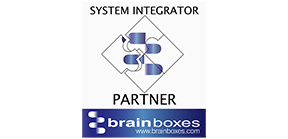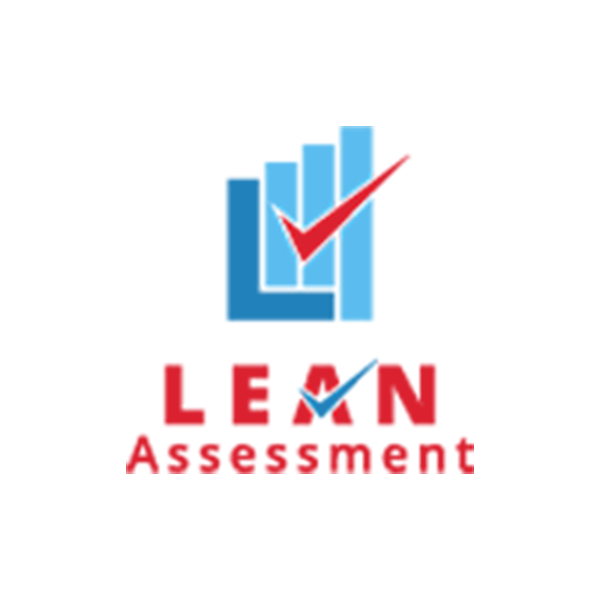How 5S implementation plans drive Environmental Responsibility?
- By Brett Griffiths
- 5S Process
- November 19 , 2024
- Share

The future of manufacturing relies not just on productivity but on practices that save our planet. One of the vital reasons for implementing Lean methods in manufacturing is the same- Lean is not only for profit but also for the future.
Lean Manufacturing has radically transformed how companies foster optimisation, reductions in production costs, and the eradication of waste while pursuing sustainable growth. One of the tools in Lean Manufacturing that fit nicely into this picture of change is the 5S (Sort, Set in Order, Shine, Standardise, Sustain) methodology. As an essential component of transformation, 5S minimises the usage of resources, wastage and impact on the environment. Therefore, apart from standardising and organising workplace practices, the application of 5S expanded to enhance the environmental responsibility of a business.
Let's explore how 5S implementation of Lean Management acts as a cornerstone for Sustainability and how it supports environmental responsibility by magnifying efficiency, minimising waste and maintaining a sustainable work culture.
Influence of Lean Manufacturing and Sustainability
Lean production techniques often create a culture of waste minimisation, continuous improvement, and employee empowerment. As you know, the popularity of Lean Manufacturing's efforts to generate greater productivity and lower-cost products by emphasising eliminating nonvalue-added activities has caused its rapid expansion throughout diverse manufacturing and service sectors. In addition, companies all around the world are adopting Lean as their sustainable manufacturing method to reduce their environmental footprint.
Lean drives continuous improvement with its concept, tools and techniques. The 5S framework popularised by TPS (Toyota Production System) is the best solution provided by Lean for an organisation's quest for achieving Sustainability with shopfloor excellence.
The adoption of Lean principles, especially the 5S, will allow organisations to run with minimal waste and costs and minimal environmental impact. Since Lean methodologies avoid waste and focus on the local processing of work and materials, they inherently support Sustainability objectives and worldwide environmental policies.
Let's have a look at the key Lean principles and their impact on Sustainability.
Lean Principle |
Sustainability Benefits |
|---|---|
Continuous improvement |
Reduce resource consumption, long-term resource conservation. |
Waste Elimination |
Reduce the overuse of energy, materials and time. |
Employee Empowerment |
Environmentally aware and responsible culture, Resource conscious decision making. |
Just-in-Time (JIT) |
Reduce inventory-related wastes, Lower energy costs for storage. |
Lean and Green: Why Sustainability matters in manufacturing?
Lean Manufacturing and Sustainability are complementary approaches. Both improve overall performance and enhance responsible stewardship of resources.
Look at the benefits of 5S implementation for enhanced environmental responsibility.
Cost Savings: Less wastage and power consumption convert into financial savings.
Regulatory Compliance: Preventive environmental activities follow the standard industrial prescriptions and do not lead to fines.
Improved sales: Sustainability is a smart business strategy. Corporate social responsibility and green identity sets an organisation apart from competitors. People wish to reduce their negative environmental impact and purchase more from there.
Enhanced Brand Image: Sustainable firms are trusted by the public, and often, customers are loyal to such organisations.
Safer work environment: A green work environment boosts productivity, promotes innovation and enhances morale.
5S Implementation: The Foundation for Sustainable Lean Manufacturing
Understanding the 5S pillars and how they act as a framework for operational Sustainability will shed more light on the impact of Lean Manufacturing techniques on environmental responsibility. Learn more about the 5S actions and their practical impact on achieving sustainable goals.
Sort (Seiri): Minimising Material Waste
The first of the 5S activities is Sort, where unrequired items in the working environment should be eliminated. This means that the manufacturers limit the use of unwanted products so that they only contain what is needed, which contributes to environmental advantages.
Environmental Benefits of Sorting
Reduces the storage of materials that are not wanted in the current project, hence reducing the waste rate.
Minimised space usage, means there is no over-provision of space for most storage facilities and their respective energy usage.
Set in Order (Seiton): Optimising Space for Energy Efficiency
Set in Order in the next phase brings order to the tools and the materials used in operations, thus enhancing efficiency. The advantages of this include that the manufacturers can minimise unnecessary motion, energy consumption, and cycle time, all for Sustainability and Lean Manufacturing.
Environmental Benefits of Set-in Order
Cut down the distance that the material must be transported, hence saving on energy and fuel.
Minimised space usage, therefore, means there is no over-provision of space for most storage facilities and their respective energy usage.
Shine (Seiso): Creating a Clean, Eco-Friendly Workspace
Shine entails the act of regular maintenance and cleaning within workplaces with the aim of prolonging good workplace tidiness. Sanitation prolongs the equipment lifespan, minimises environmental contamination and risks of spills and leaks.
Environmental Benefits of Shine
Lower hazardous wastes through the elimination of leakage of oils or any form of chemical.
Reduces frequency of equipment replacement and extended lifespan, resulting in reduced consumption of resources.
Reduces the risks of contaminant spills, thus increasing workplace health and safety.
Standardise (Seiketsu): Embedding Sustainable Practices
The Standardise step establishes ways of doing things such as using Sustainability practices as the new norm throughout an organisation. This consistency also aids in the management of a sustainable environment devoid of unnecessary depletion of resources, and environmental objectives are attained consistently.
Environmental Benefits of Standardise
Standardisation promotes regular recycling and waste reduction strategies.
Maintains effective methods of conserving energy.
Provides guidelines for employees to follow for achieving an organisational environmental goal daily.
Sustain (Shitsuke): Building a Culture of Environmental Responsibility
Sustain is the last but very important phase, which aims at maintaining good performance and promoting a culture of improvement. Implementing environmental standards at the workplace encourages employees to present ideas on making the environment green and develop a sustainable workplace culture.
Environmental Benefits of Sustain
Encourages accountability with regard to how resources are used by the employees.
Management brings Sustainability goals into the day-to-day operations of the business and creates a new organisational culture.
5S as a Catalyst for Sustainable Manufacturing
5S, when embedded into Lean Manufacturing, makes a strong channel through which organisations can seek environmental Sustainability. Using this approach, the organisation can achieve Lean objectives of cutting waste and attaining long-term Sustainability. Lean Manufacturing not only focuses on eliminating waste but is also a strategy necessary for the development of sustainable, environmentally friendly businesses in today's world.
The range of environmental benefits that 5S implementation contributes includes reduced waste generation, lowered energy consumption, minimised greenhouse gas emission, responsible resource management, eco-friendly practices among employees and many more.
For the effective implementation of 5S principles on your shop floor, adopting automation is the best approach. Lean 5S audit and assessment solutions are powerful tools to streamline and automate the 5S implementation process. The Saisho 5S is a Lean 5S audit and assessment app that works to make the workplace organised, creating a safer, more efficient, productive and sustainable environment. Partner with Lean Transition Solutions for the right strategies and tools to make your way to Lean, sustainable, and efficient manufacturing faster.
FAQs
1. What is Lean Manufacturing and Sustainability?
Lean and Sustainability can be integrated to achieve manufacturing competitiveness. Lean Manufacturing is a comprehensive concept of eliminating waste and enhancing the efficiency of production, which makes a positive impact on the environmental responsibility of an organisation.
2. What are the 5S principles?
5S Lean Manufacturing is a concept derived from the Japanese terms "Seiri, Seiton, Seiso, Seiketsu, and Shitsuke," which represents a systematic methodology within Lean Manufacturing to optimise workplace efficiency and organisation. The 5S pillars are Sort, Set in Order, Shine, Standardise, and Sustain.
3. How does 5S implementation develop sustainable Lean Manufacturing?
Apart from standardising and organising workplace practices, the application of the 5S expanded to enhance the environmental responsibility of a business. 5S minimises the usage of resources and wastage and impacts the environment.
4. How does each pillar of the 5S work to ensure environmental responsibility?
Sort: Minimising material waste
Set in Order: Optimising Space for Energy Efficiency
Shine: Creating a Clean, Eco-Friendly Workspace
Standardise: Embedding Sustainable Practices
Sustain: Building a Culture of Environmental Responsibility
5. What are the Lean principles and their impact on Sustainability?
The continuous improvement principle contributes to long-term resource conservation.
Waste Elimination reduces the overuse of energy, materials and time.
Employee Empowerment develops an environmentally aware and responsible culture.
Just-in-Time- strategies reduce inventory-related wastes.
Start Free Trial
LEAN TRANSITION SOLUTIONS
The Old Vicarage, Pershore Road, Upton Snodsbury, Worcester, Worcestershire, WR7 4NR, United Kingdom.
BLOG
Lean Transition Solution
-
Lean Industry 4.0 Solutions
- TITAN:Computerised Maintenance Management System
- Data Point:Computerised Balanced Scorecard
- Janus: Automated Shop-floor Data Capture System
- T-Card: Integrated Production Planning and Plant Level Execution System
- JDI: Maintenance Automation App
- Maximus: Integrated ERP System
- e-Contractor: Integrated In-house Contractor Management System
- Q-Point: Integrated Quality Management System
- Safety-Point: Integrated Health and Safety Management System
- Lean Assessment: Lean Audit and Assessment System
- Saisho: Lean 5S Audit and Assessment App
- Emergency Response App: To Manage Emergency Situations
-
Leadership 4.0 Solutions
- Your Career Academy(YCA): Learning and Development System
- YCA e-Learning : Management System
- MentorYou(MU): Mentoring App
- Leadership 4.0 : Leadership Transformation Program
- Lean Manufacturing Workshop
- Lean Manufacturing Consulting
- ILM Accredited Green Belt Training and Certification Program
- ILM Accredited Black Belt Training and Certification Program
- Software Development Service
- Resources
- Company
- Contact











